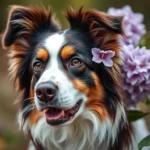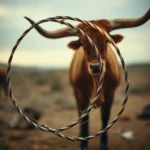
Introduction
The world of dog breeds is vast and colorful, showcasing a remarkable diversity that caters to various preferences and lifestyles. Understanding the differences between breeds is essential for potential dog owners, as each type comes with its unique set of characteristics, care requirements, and personality traits. Among the many breeds, the Panda Pug stands out as a fascinating and increasingly popular choice.
The Panda Pug is a delightful variation of the traditional pug, gaining attention for its striking appearance and charming personality. In this article, we will explore the unique traits of the Panda Pug, from its origins to its care and training needs, providing a comprehensive guide for anyone considering this enchanting breed.
Understanding Dog Breeds
What is a Dog Breed?
A dog breed is a specific group of dogs that share consistent physical and behavioral traits, typically resulting from selective breeding practices. The concept of dog breeds dates back thousands of years, with early domesticated dogs being bred for various purposes, such as hunting, herding, or companionship. Over time, these breeding practices have led to the diverse array of breeds we see today, each tailored to fulfill specific roles and meet the needs of their human companions.
Factors that Influence Dog Breeds
Several factors contribute to the development and characteristics of dog breeds, including:
- Genetic Makeup: The genetic background of a breed significantly influences its physical traits, size, and coat type.
- Physical Traits: Breeders often select for specific features, such as ear shape, color, or body structure, to create distinct breeds.
- Behavioral Traits: Temperament and behavior are also key considerations, as certain breeds are known for their intelligence, friendliness, or protective instincts.
The Panda Pug
Origin and History
The Panda Pug is a relatively new variation of the pug breed. The traditional pug has a long history dating back to ancient China, where they were prized as companion animals for royalty. Their playful nature and affectionate demeanor made them popular throughout Europe during the 16th and 17th centuries.
The Panda Pug emerged as breeders began to experiment with the pug’s coat color, aiming to create a unique look that resembles the beloved giant panda. This striking appearance, characterized by a contrasting black and white coat, has captured the hearts of dog lovers around the globe.
Physical Characteristics
The Panda Pug shares many physical traits with the traditional pug but stands out due to its distinctive coloring. Key characteristics include:
- Size and Weight: Typically weighing between 14 to 18 pounds, the Panda Pug is a small breed, making it suitable for apartment living.
- Coat Color: The most defining feature of the Panda Pug is its striking black and white coat, resembling that of a panda.
- Face Shape: Like all pugs, the Panda Pug has a short, flat face, which contributes to its expressive features, including large, round eyes and a wrinkled forehead.
- Body Structure: This breed has a compact, muscular build, with a broad chest and a curled tail.
Temperament and Personality
The Panda Pug is known for its friendly and affectionate temperament. Some of the key personality traits include:
- Playfulness: These dogs are known for their playful antics, making them entertaining companions.
- Affectionate Nature: Panda Pugs thrive on human interaction and often form strong bonds with their owners.
- Adaptability: They are adaptable to various living situations, whether in a bustling city or a quiet countryside home.
Suitability as a Family Pet
With their friendly disposition and gentle nature, Panda Pugs make excellent family pets. They are typically good with children and can coexist peacefully with other pets if properly socialized.
Care and Maintenance of Panda Pugs
Nutritional Needs
Proper nutrition is crucial for maintaining the health of your Panda Pug. Here are some key points to consider regarding their diet:
- Recommended Diet: A high-quality dog food formulated for small breeds is ideal. Look for options rich in protein and healthy fats to support their energy levels.
- Common Dietary Restrictions: Due to their brachycephalic nature, Panda Pugs may be prone to obesity. It’s essential to monitor their food intake and avoid excessive treats.
Exercise Requirements
While Panda Pugs are not overly active, regular exercise is vital for their physical and mental well-being:
- Activity Level: They enjoy short walks and playtime but should not be over-exerted due to their flat faces.
- Fun Activities: Engaging games like fetch or gentle tug-of-war can be enjoyable for both the dog and its owner.
Grooming and Health Care
Maintaining the health and appearance of your Panda Pug involves a regular grooming routine:
- Grooming Routine: Their short coat requires minimal grooming; however, regular brushing helps reduce shedding and keeps their skin healthy.
- Common Health Issues: Like all pugs, Panda Pugs are prone to certain health issues, such as respiratory problems, skin conditions, and eye disorders. Regular veterinary check-ups are essential for early detection and prevention.
Training and Socialization
Basic Training Techniques
Training your Panda Pug is essential for ensuring they become well-behaved companions. Some effective techniques include:
- Essential Commands: Teaching basic commands like sit, stay, and come is crucial for their safety and good behavior.
- Consistency and Positive Reinforcement: Using consistent cues and rewarding good behavior with treats or praise can help your Panda Pug learn faster.
Socialization Needs
Socialization is vital for the development of a well-rounded dog:
- Importance of Socializing: Exposing your Panda Pug to various environments, people, and other pets will help them develop confidence and reduce anxiety.
- Recommended Socialization Activities: Taking them to dog parks, puppy classes, or arranging playdates with other dogs can be beneficial.
Living with a Panda Pug
Ideal Living Conditions
Panda Pugs are versatile and can thrive in different living conditions:
- Best Environments: They are well-suited for apartment living due to their small size but also enjoy homes with yards.
- Temperature Considerations: Due to their brachycephalic nature, they are sensitive to extreme temperatures. It’s essential to keep them cool in hot weather and warm in cold conditions.
Compatibility with Children and Other Pets
Panda Pugs generally get along well with children and other pets:
- Interactions with Kids: Their playful nature makes them excellent companions for kids, but supervision is always recommended during play.
- Tips for Ensuring Harmony: Gradual introductions and positive reinforcement can help ensure peaceful coexistence with other pets.
Choosing a Panda Pug
Where to Find Panda Pugs
If you’re considering adding a Panda Pug to your family, it’s essential to find a reputable source:
- Reputable Breeders vs. Adopting: Researching breeders who specialize in Panda Pugs is crucial. Adoption from shelters can also be a wonderful option, as many pugs are in need of loving homes.
- Importance of Researching: Visiting breeders and asking about health clearances and lineage can help ensure you find a healthy puppy.
Cost Considerations
Understanding the financial commitment involved in caring for a Panda Pug is essential:
- Average Price Range: The cost of a Panda Pug can vary widely based on breeder reputation, location, and demand, typically ranging from $1,500 to $3,000.
- Additional Costs: Regular veterinary care, grooming, food, and training will add to the overall expenses of owning a Panda Pug.
Conclusion
The Panda Pug is a charming and unique addition to the world of dog breeds, combining the beloved traits of pugs with a distinctive appearance. From their friendly temperament to their adaptability, these dogs can make wonderful companions for individuals and families alike. Understanding their care and maintenance needs, training requirements, and compatibility with various living situations will help ensure a happy and healthy life for your Panda Pug.
If you’re considering welcoming a Panda Pug into your home, take the time to research and ensure that this breed aligns with your lifestyle and expectations. With the right preparation and commitment, a Panda Pug can bring joy and companionship for years to come.









